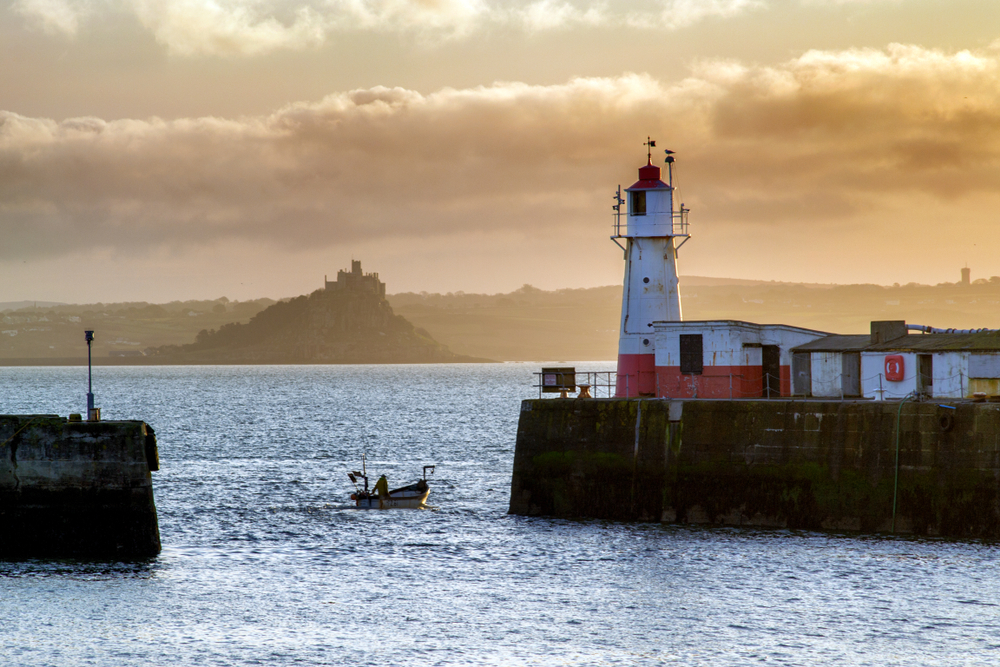The harbour at Newlyn is Cornwall’s busiest, and one of the largest fishing ports in the UK, offering a safe refuge to its own fleet as well as visiting foreign vessels. There has been a harbour here for countless centuries, in fact it is said that Newlyn was the final port for the Mayflower as it began its famous journey to the new world. However, the main piers that we see today were only completed in the 1880s. It was around this time that Newlyn Lighthouse was built.
History of Newlyn Lighthouse
Newlyn Lighthouse was constructed on the end of the 600ft long, southerly pier by workmen in 1887 at a cost of £460 according to the Cornish Echo newspaper, at that time the harbour was not only busy with fishing but also with the export of local granite. Made of iron and painted in red and white bands it first shone its light, which can be seen for 7 miles, in March 1887.
This little lighthouse has now stood though every storm for more than 130 years, including one in March 1962 which saw 100mph winds and enormous seas do tremendous damage to the harbour walls. It has even survived a serious explosion which took place soon after it was built.
In January 1896 the keeper, William Maddern, climbed up inside the tower to extinguish the light only to find it blazing out of control. This was in the days before electricity and the lamp was powered by oil. Somehow the wick of the lamp had set the oil in the main reservoir alight and as Maddern struggled to put it out the whole thing exploded showering the poor keeper in burning liquid. Maddern then found that his escape route, a metal trap door in the floor, had become too hot to touch. Fortunately the explosion had blown out the lighthouse’s windows so he was able to climb outside and was rescued by men on the quay using ropes.
National Tidal Observatory
Just beside the lighthouse is a small, squat building that most people pass by without a second glance but its history is even more fascinating than the lighthouse itself. The building houses the National Tidal Observatory. Opened in 1915 the observatory contains a simple brass bolt set into a recess in the floor which is used to mark the mean sea level. From 1921 the top of this bolt was also used by Ordnance Survey as the benchmark for mapping all height measurements in the UK. That means that all heights that you saw on maps were referenced to this one point on the Cornish coast.
But beyond this rather strange accolade the Tidal Observatory and the men who worked inside it took daily measurements of tide levels here from 1915 up until 1984 providing the longest continuous and most accurate tidal data ever recorded certainly in the UK and probably in the world. Over that period the measurements remained fairly consistent but there was the odd exception. On November 25th 1941 the tide gauge recorded a small tsunami hitting Cornwall after an earthquake in the west of Portugal.
As rising sea levels become the focus of much discussion and concern around the world the information gathered at Newlyn for nearly a century will be of international importance in the future as we study the effects of climate change. This unlikely but vitally important role was recognised in 2018 when this inauspicious hut was made a Listed Building by Historic England.
If you would like to read more about Cornwall’s lighthouses you can take a look at: Pendeen Lighthouse, Godrevy Lighthouse, St Anthony Lighthouse.
